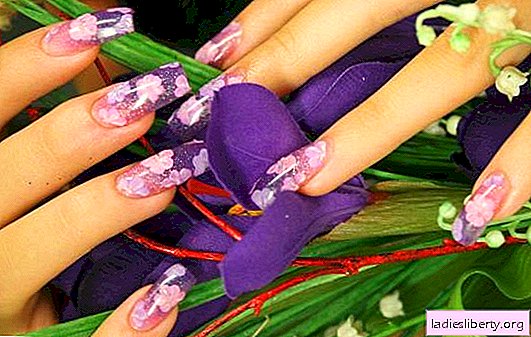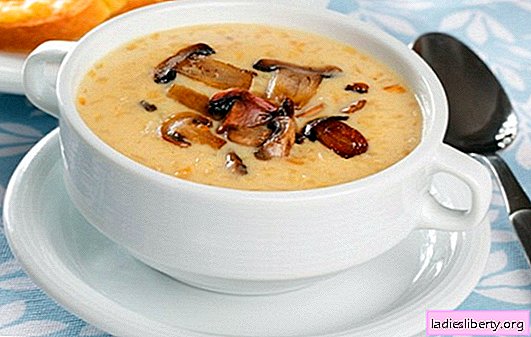
Garden tradescantia is an unpretentious herbaceous plant that belongs to the Commeline family. This genus has more than 60 species of plants, but only 10 of them can be grown in temperate climates.
Thin shoots form a lush bush that can reach a height of 20 cm to 1 meter. The leaves of the tradescantia are green; some species are yellow or purple in color. Delicate flowers of the plant are collected in inflorescences. Varied in color, they bloom in the morning and wither by the evening. New inflorescences bloom constantly, creating the impression of a continuously flowering bush. Tradescantia blooms from June; new flowers continue to appear until September. Bright petals attract pollinating insects to the garden.
Varieties and types of tradescantia garden (photo)
Today lovers of garden tradescantia can grow plants with double flowers, two-tone or with twisted leaves. Hybrid varieties form larger flowers, the leaves of the plant have a grayish-green color with a stripe in the middle.
Gardeners grow some of the most popular types of tradescantia, which develop well in temperate climates.
1. Tradescantiana Virginia.

At home, it can be found in forests, meadows or near roads. It grows well on loose nutrient soils, prefers moderate soil moisture.
The bush of the Virginia tradescantia reaches a height of about 80 cm. The leaves of the plant are painted green. The bush blooms with pink-purple flowers, sometimes white. There are varieties with blue and red petals.
This type of tradescantia can be grown in one place for a long time, it does not grow in width. In landscape design, the plant is used to create mixborders and various flower arrangements.
2. Tradescantia Anderson.

This hybrid tradescantia was developed on the basis of the variety Virginia. The bush has erect stems that grow up to 80 cm. The color of the leaves is purple-green, the flowers form white, blue, pink and purple.
3. Tradescantia Blue.

Grow as an annual. In late autumn, the resulting tubers are dug up and laid for wintering. In spring, rhizomes are again planted in the garden. The bush is medium-sized up to 50 cm in height. Thanks to its compact size and powerful erect stems, tradescantia can be grown in containers. The bush blooms in August-September, forming bright blue inflorescences.
Planting Tradescantia in the Garden: Plant Care
Garden Tradescantia - This is a fairly unpretentious plant that can be grown in one place for a long time. To do this, pay enough attention to the soil and the choice of location.
You need to choose a site for growing the garden tradescantia so that the sun illuminates the bush in the morning and evening. In the midday heat, the plant needs shading. With this arrangement, the tradescantia grows well and pleases with flowering even on hot days. But to plant a shrub in full shade is not recommended, since flowering may not occur.
Soil for tradescantia
The soil for planting is prepared in advance. The plant prefers well-moistened soil, fed with organic fertilizers. For this, before planting the tradescantia, the soil is dug up, cleaned of weeds, and well fed with organic matter. Compost, humus or peat are laid out in the planting furrows, watering well. Transplanting bushes with developed stems, the root neck is deepened by 1-2 cm. After planting, the tradescantia is abundantly watered, and the soil around the bush is mulched. To do this, use humus or peat.
Plant nutrition
The first top dressing is introduced in the spring, when the garden is cleaned from plant debris. During this period, mineral granules are used, which are embedded in the soil to a depth of 8 cm.
The second time you can feed the tradescantia in May, using liquid nitrogen fertilizers. Repeated feeding should be carried out once every two weeks, using complex fertilizers. In August-September, potash fertilizers are introduced under the tradescantia.
Watering Tradescantia
Tradescantia prefers moist soils. Watering should be infrequent, but plentiful. In the dry period, the plant needs frequent spraying of leaves, preferably in the evening. To keep the flowers of Tradescantia bright for spraying, you need to use rain or distilled water.
The lack of moisture during the hot period slows down the growth of the plant, flowering stops. In such circumstances, the tradescantia may die.
Preparing for the winter
After the end of the growing season, the tradescantia must be prepared for wintering. To do this, with the onset of October, the aerial part of the plant is cut off. The soil is mulched with humus or peat, this will help the plant survive the winter.
Growing tradescantia in the garden: how to propagate a plant
Garden tradescantia propagated vegetatively. Seed propagation is used only when breeding new varieties and species.
Experienced gardeners most often use the following methods of reproduction:
• Division of the bush;
• Stem cuttings.

The easiest way to reproduce is to divide the bush. The procedure is carried out in spring or autumn. Small plots are separated from the adult plant, which are immediately planted in a permanent place in the garden. The most favorable time for this method of reproduction is the first half of July.
To divide the stem cuttings using green parts of the plant with 2-3 internodes. Cut cuttings are placed in a greenhouse and deepened by a few centimeters. Watering should be regular during rooting. Tradescantia can be propagated in this way all summer, using biennial plants as the mother plant.
Diseases and pests of the tradescantia gardena
Gardeners love the tradescantia for its resistance to disease. But nematodes and slugs do little damage to the bushes, and in the hot summer the buds eat bronze beetles.
When tradescantia is infected with nematodes, you need to cut off all the leaves and burn them. As a preventive measure, plants are planted next to the bushes that cleanse the soil of pests. As "neighbors" use mustard, watercress, marigolds.
How to use tradescantia in landscape design
Due to the variety of species and varieties, tradescantia can be widely used in landscaping the site. With the help of bushes, you can create natural thickets on the site.
Tradescantia can be grown in composition with irises, ferns, daylilies. Tall plant varieties go well with geraniums, which are planted in the foreground.
With the help of tradescantia, you can revive water bodies. Looks good single planting among the lawn.
Growing tradescantia: beneficial properties of the plant
In addition to decorative qualities, tradescantia is often used in folk medicine. The plant cleans the air well, heals wounds and cuts, runny nose.
For the treatment of cuts, fresh leaves of tradescantia are used, which are ground until juice appears, applying to an injured place. Tradescantia stops bleeding well.











